Enhancing underwater operations through advanced autonomous manipulation
llistat de metadades
Author
Director
Ridao Rodríguez, Pere
Palomeras Rovira, Narcís
Date of defense
2024-07-09
Pages
85 p.
Department/Institute
Universitat de Girona. Departament d'Arquitectura i Tecnologia de Computadors
Doctorate programs
Programa de Doctorat en Tecnologia
Abstract
The interest in the use of AUVs has increased in recent decades. While former research focused on underwater exploration for sea bottom mapping (bathymetries, sonar, and photo mosaics), it evolved soon into 3D optical reconstruction and offshore infrastructure inspection. Progress in these areas has sparked the interest of the community in employing AUVs for intervention tasks, thereby replacing ROVs and manned submersibles with I-AUVs. This substitution offers the potential to automate tasks, improving efficiency and repeatability while reducing costs, time, and logistics. However, autonomous intervention underwater is challenging. It requires the joint control of a heterogeneous multibody system composed of the AUVs and the manipulators, which have significant differences in terms of control and accuracy. Most intervention tasks, such as object grasping or valve turning, require centimeter accuracy in the position of the end effector. This accuracy is severely affected by a chain of errors, beginning with the navigation error and continuing with the calibration errors of the involved systems, including inaccuracies in the positions of the cameras, lasers, and manipulators, joint calibration errors, and other uncertainties within the system. Another challenge is the manipulation of bulky objects which are difficult, if not impossible, to satisfy with a single vehicle. Most probably, future autonomous intervention systems will be multi-robot. This poses new problems to solve, like the joint control of a team of \acp{iauv} coordinated through low bandwidth communication channels. Finally, it is necessary to root the autonomous underwater intervention research to the actual needs of field applications. This thesis is a contribution along these lines. It aims to advance the autonomous underwater intervention state of the art to increase the autonomy of \acp{iauv} for \ac{imr} tasks in offshore infrastructures. First, a new framework is proposed to calibrate the intrinsic/extrinsic parameters of the I-AUVs components, using robust modeling of the minimization equations leveraging Lie theory. Then, the Task Priority redundancy control algorithm is enhanced to control two I-AUVs, communicating through a low-rate communications channel to transport a bulky object. Finally, an effort is made to study the actual capabilities of I-AUVs to face field applications in the area of offshore renewable energies. A Task Priority algorithm supporting admittance control is used to control an I-AUV performing non-destructive inspection for cathodic protection on a floating semi-submersible windmill structure. Throughout the thesis, all the works present both simulation and experimental results, validating the efficiency and potential of the proposed solutions
L'interès per l'ús de vehicles autònoms submarins (AUVs) ha augmentat en les últimes dècades. Mentre que la recerca prèvia se centrava en l'exploració submarina per la cartografia del fons marí (batimetries, sonar i mosaics fotogràfics), aviat va evolucionar cap a la reconstrucció òptica 3D i la inspecció d'infraestructures en alta mar. Els avenços en aquests àmbits han despertat l'interès de la comunitat científica per utilitzar AUVs per les tasques d'intervenció, substituint així els vehicles operats remotament (ROVs) i els submergibles tripulats per vehicles autònoms submarins d'intervenció (I-AUVs). Aquesta innovació ofereix la possibilitat d'automatitzar les tasques, millorant l'eficàcia i repetibilitat alhora que es redueix el cost, temps i logística d'aquestes operacions. Tanmateix, la intervenció autònoma submarina és un gran repte. Requereix el control conjunt d'un sistema heterogeni compost pel vehicle i els braços robòtics (o manipuladors) que presenten diferències significatives en termes de control i precisió. La majoria de les tasques d'intervenció, com la recuperació d'objectes o la manipulació de vàlvules, requereixen una precisió de centímetres, fins i tot mil·límetres, en la posició de la pinça. Aquesta precisió es veu greument afectada per una cadena d'incerteses, que comença amb els errors de navegació del vehicle i continua amb els errors de calibració dels sistemes implicats, incloent-hi les imprecisions en les posicions de les càmeres, làsers i manipuladors, els errors de calibració de les articulacions, i altres incerteses del sistema. Un altre repte és la manipulació d'objectes voluminosos, que és difícil, si no impossible, de satisfer amb un sol vehicle i requereix l'ús de sistemes multi robot. Això planteja nous problemes a resoldre, com el control conjunt d'un equip d'I-AUVs coordinats a través de canals de comunicació amb poca amplada de banda. Finalment, és necessari arrelar la recerca en intervenció autònoma submarina a les necessitats actuals de les aplicacions de camp. Aquesta tesi ofereix una contribució en aquesta línia. L'objectiu és avançar en l'estat de l'art de la intervenció autònoma submarina per augmentar l'autonomia dels I-AUVs en les tasques de inspecció, manteniment i reparació d'infraestructures marítimes. Primer, es proposa un nou sistema per calibrar els paràmetres intrínsecs i extrínsecs dels components del robot, utilitzant un model robust de les equacions de minimització emmarcat en la Teoria de Lie. A continuació, es proposa un algoritme descentralitzat de control i gestió de redundància d'un sistema compost per dos robots, que transporten cooperativament un objecte voluminós, mentre es comuniquen per una línia de baixa amplada de banda. Finalment, els esforços es dirigeixen a estudiar les capacitats reals dels I-AUVs per afrontar aplicacions en l'àmbit de la generació d'energies renovables en alta mar. Es proposa una extensió en l'algorisme de control del robot per suportar el control actiu de força i poder dur a terme inspeccions de la protecció catòdica en l'estructura semi submergible d'un aerogenerador d'alta mar. Al llarg de la tesi, tots els treballs presenten resultats tant en simulació com experimentals, validant la eficiència i potencial de les solucions proposades
Keywords
Robòtica submarina; Robótica submarina; Underwater robotics; Vehicles autònoms submarins; Vehículos autónomos submarinos; Autonomous underwater vehicles; Intervenció; Intervención; Intervention; Manipulació autònoma; Manipulación autónoma; Autonomous manipulation; Control bimanual; Bimanual control
Subjects
004 - Computer science; 68 - Industries, crafts and trades for finished or assembled articles



